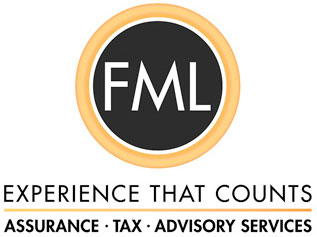TANGO Partners Perspective – October 2020
Using and Recognizing your PPP Dollars Accurately
Amber Tucker, Director, Assurance & Advisory Services
Fiondella, Milone and LaSaracina LLP – FML

The guidance on the Paycheck Protection Program provided by the Small Business Administration (SBA) has been voluminous and not always clear. Updated guidance has provided some clarification, but unfortunately many questions are yet to be answered. FML has been a partner providing edifying information on these updates and changes for the business industry in as timely a manner as possible. If you haven’t had a chance to view our webinars you can still do so. On our site you will find our past webinars and articles written with real time information.
Highlights of important PPP concepts:
1: If your loan is less than $50,000
On October 8, 2020, the SBA released a streamlined application, Form 3508S, designed specifically for those who borrowed less than $50,000. Although forgiveness will NOT be automatic, several of the issues that make the application for forgiveness time-consuming have been removed for these small borrowers.
Specifically, a borrower of a PPP loan of less than $50,000 is no longer required to reduce the amount eligible for forgiveness if the borrower:
- Reduces the salary or hourly wage of an employee (who earned less than $100,000 in 2019) during the “covered period” following the borrowing relative to the first quarter of 2020, or
- Reduces full-time equivalent employees (FTEs) during the covered period relative to a base period.
A borrower must still do the math and compute the amount eligible for forgiveness; the difference, however, is that small borrowers are no longer required to show their math. Be warned, however: the instructions make clear that the SBA may request from the borrower support for their computation at any time.
The application does require increased representations from the borrower.
2: Merger & Acquisition Activity
On October 2, 2020, the SBA published an SBA Procedural Notice (“SBA Notice”) that provides a framework to determine whether SBA consent is required for various changes of ownership of an entity that has received Paycheck Protection Program (PPP) funds.
Change in Ownership
A “change of ownership” is deemed to have occurred when:
- The sale or transfer of 50% or more of the assets of a PPP borrower (measured by their fair market value), whether in one or more transactions.
- The merger of a PPP borrower with or into another entity.
Prior to closing any transaction involving a change of ownership, the PPP Borrower must provide written notice of the proposed transaction to the PPP lender along with a copy of the agreement of the proposed transaction.
There are no restrictions on change in ownership if the PPP borrower has satisfied the PPP. The PPP has been satisfied is defined as (a) repaid the loan in full or (b) completed the loan forgiveness process and the SBA has remitted funds in full satisfaction of the PPP Note or (c) the PPP Borrower has paid any remaining amounts due under the PPP loan.
If a change of ownership of a PPP Borrower is greater than 50% of the assets, the PPP Borrow is required to obtain such approval, the PPP lender must submit various documentation and disclosures to the SBA. The SBA must provide its determination within 60 calendar days of receipt of a complete request
Regardless of a change of ownership, the PPP Borrower will remain responsible for all obligations and requirements under the PPP loan, including the certifications made related to the PPP loan. Additionally, the PPP Borrower remains responsible for obtaining, preparing, and retaining all required PPP forms and supporting documentation and providing this information to the PPP lender or to the SBA upon request.
3: Accounting Treatments
The AICPA has released Q&A Section 3200.18 answering a frequently asked question regarding how Companies will account for the forgivable loan received under the PPP. A common thought is repeated in the AICPA’s document although the legal form of the PPP loan is debt, some believe that the loan is, in substance, a government grant. If the not-for-profit expects to meet the PPP’s eligibility criteria and concludes that the PPP loan represents, in substance, a grant that is expected to be forgiven, the following guidance may be followed: (1) FASB ASC 958-605 Not-for-Profit Entities – Revenue Recognition or (2) FASB ASC 450-30 Gain Contingencies. When this method of accounting is not chosen then the FASB ASC 470 Debt should be followed.
There is much more guidance available and the above three points only highlight the most recent developments. If you would like assistance completing the PPP Loan Forgiveness Application or additional help regarding accounting treatment, please reach out to FML, where our consulting service team can assist with getting you the answers you need.
CONTACT OUR
TANGO PARTNER
Amber Tucker
Director, Assurance & Advisory Services
Fiondella, Milone and LaSaracina LLP – FML
P: 860.657.3651 ext. 223
C: 860.705.5828
E:
